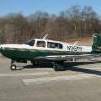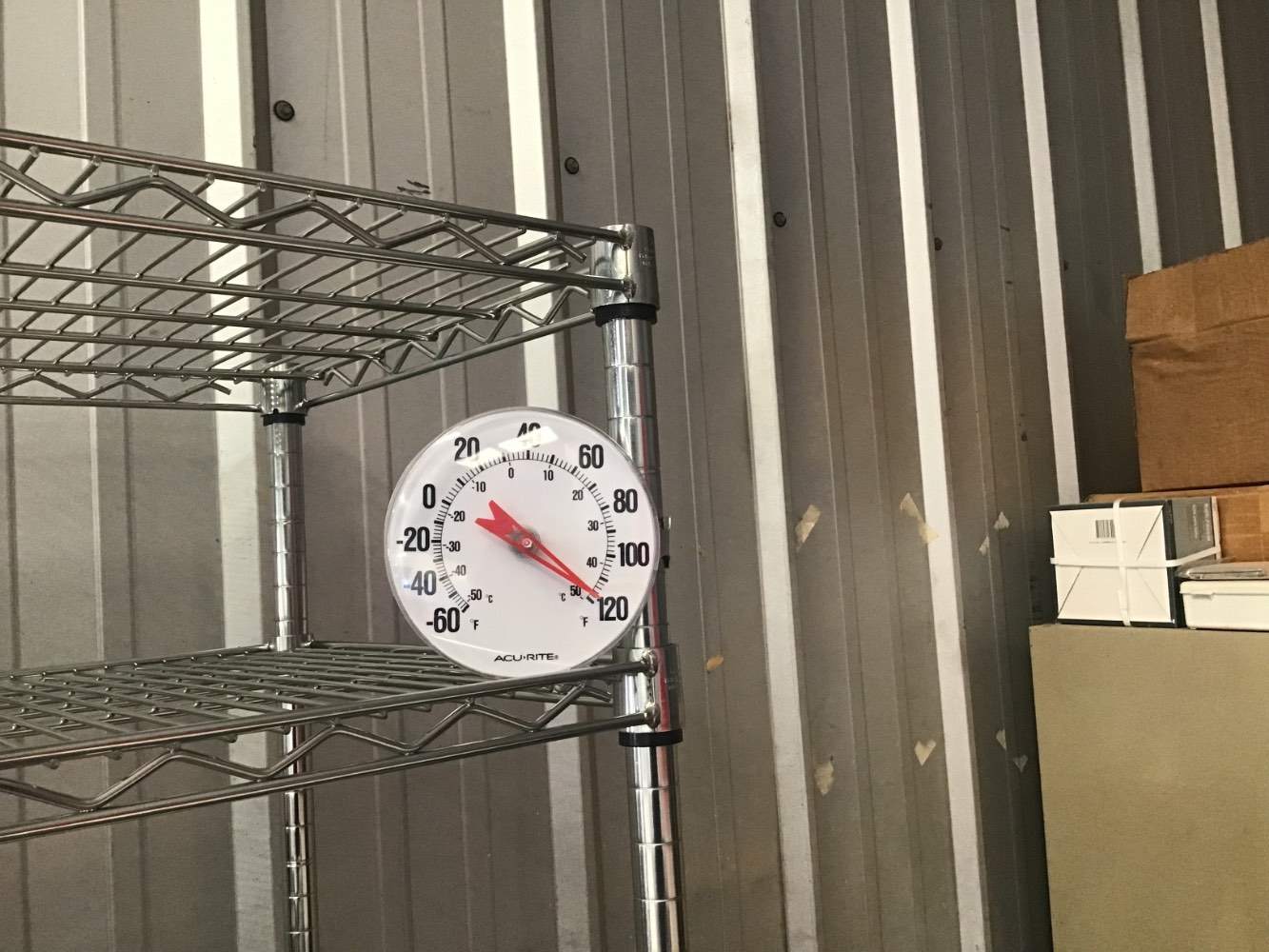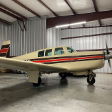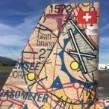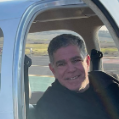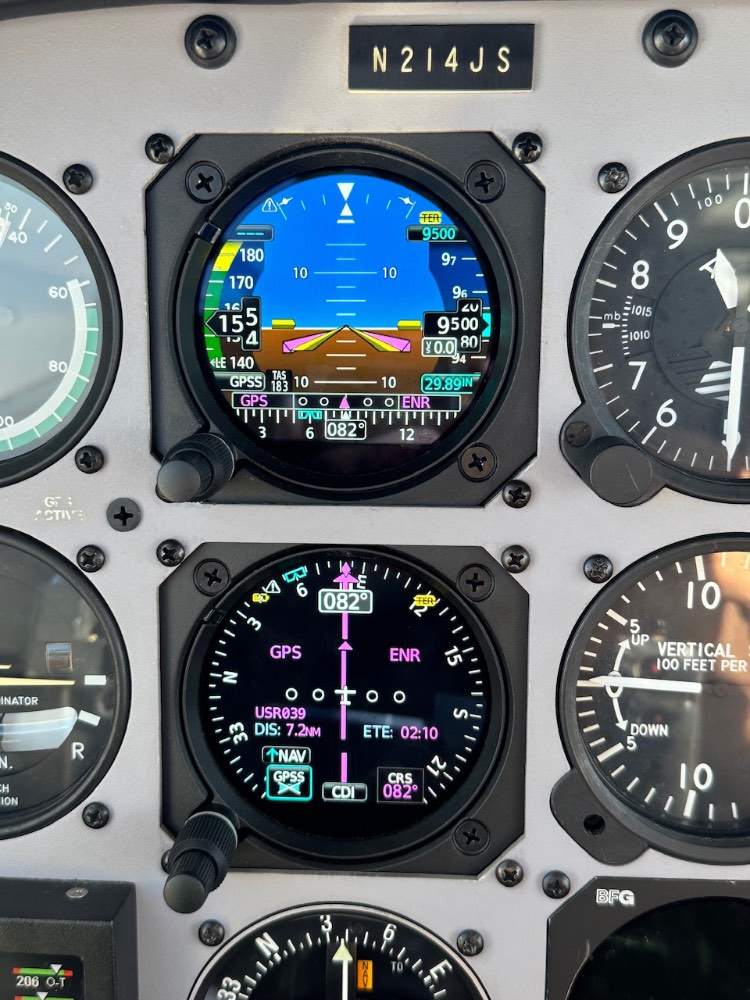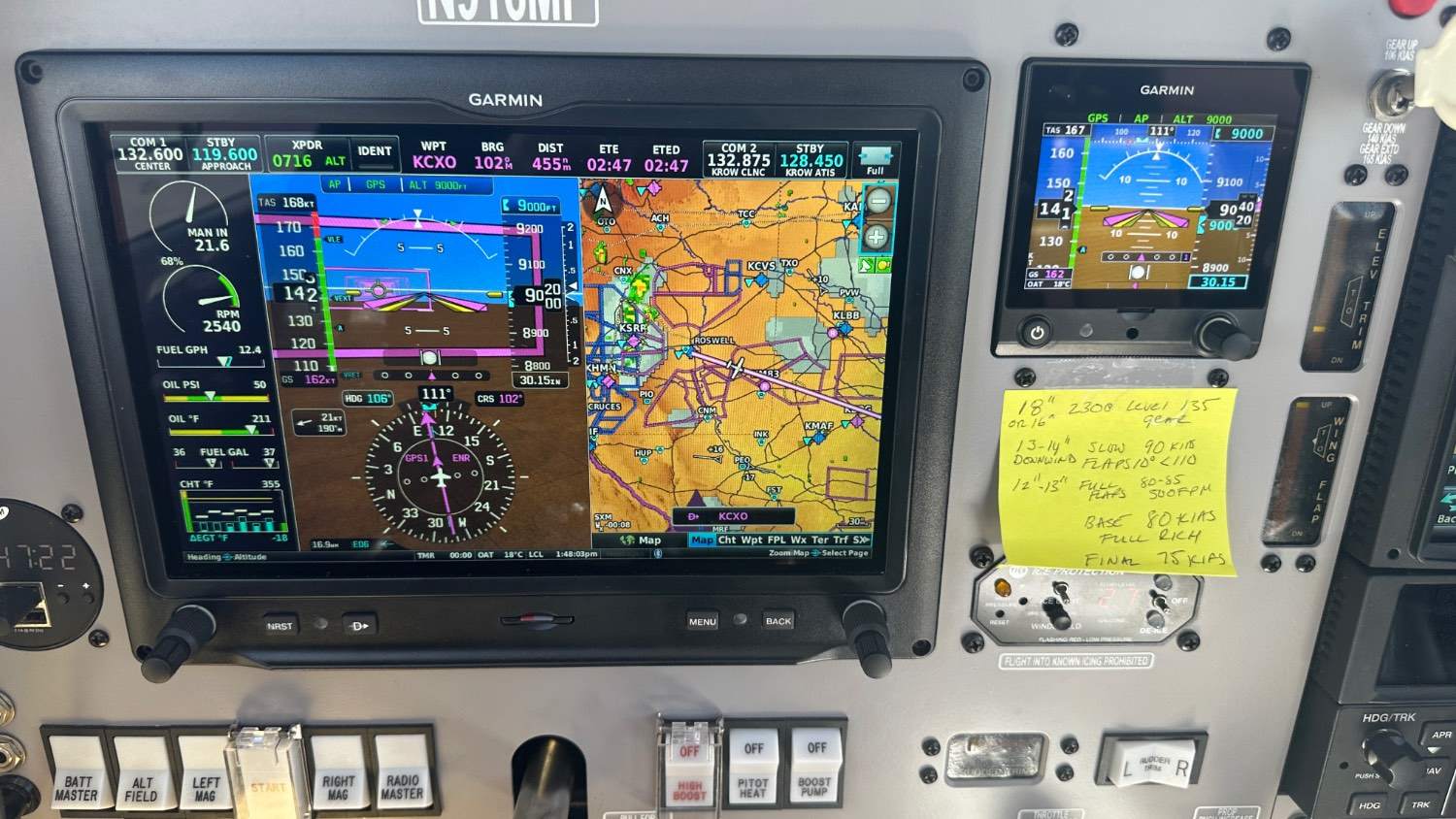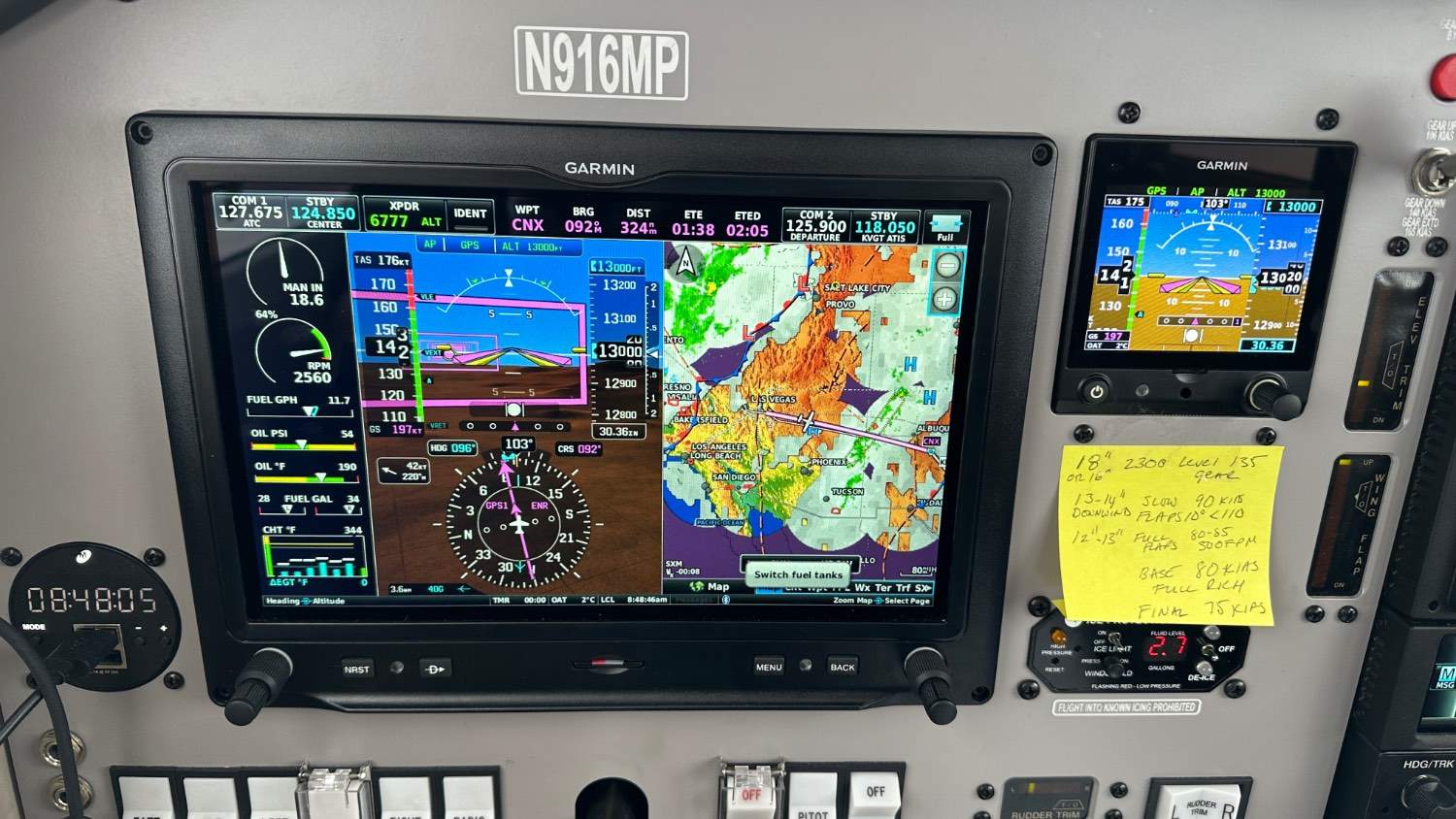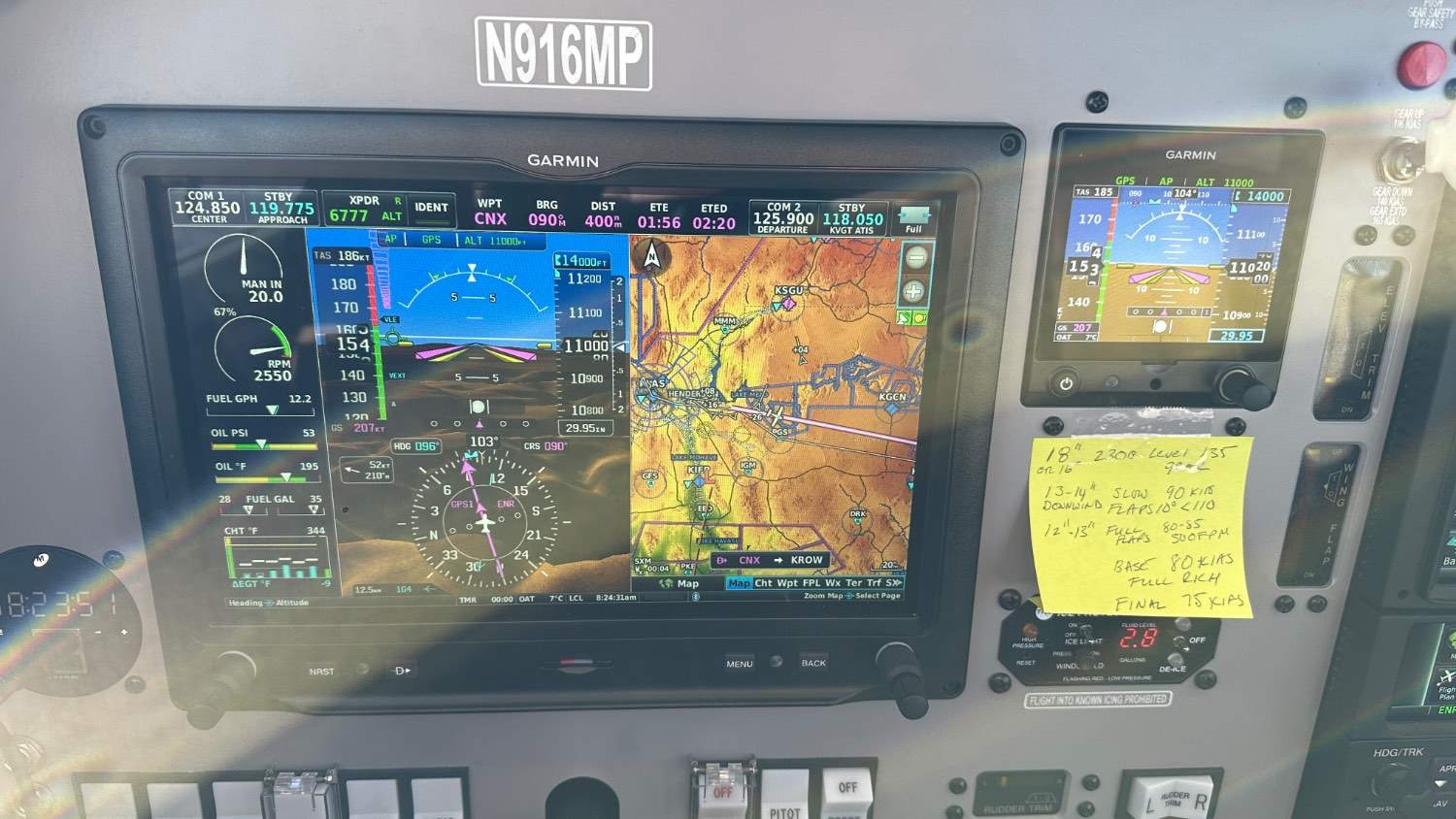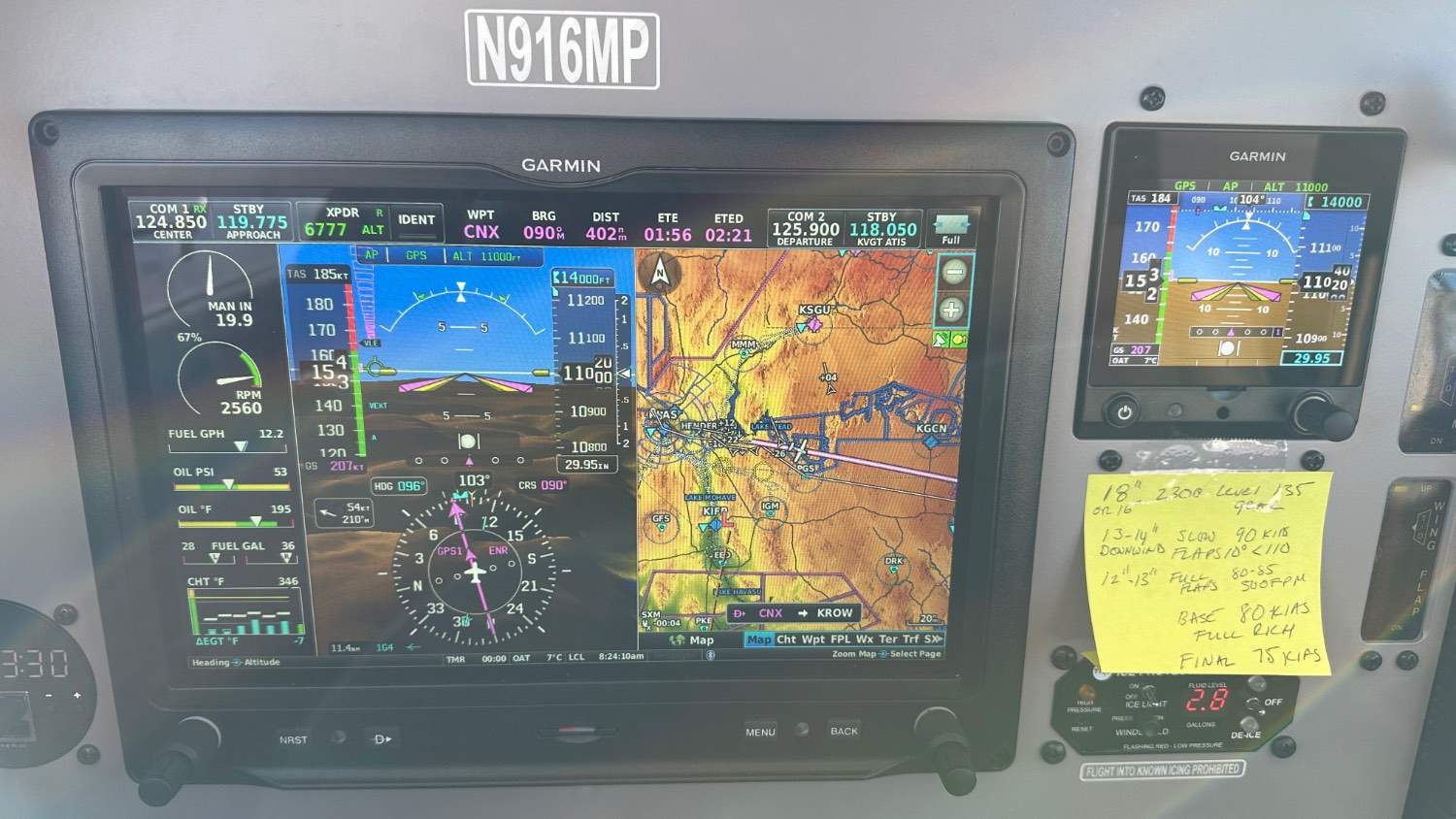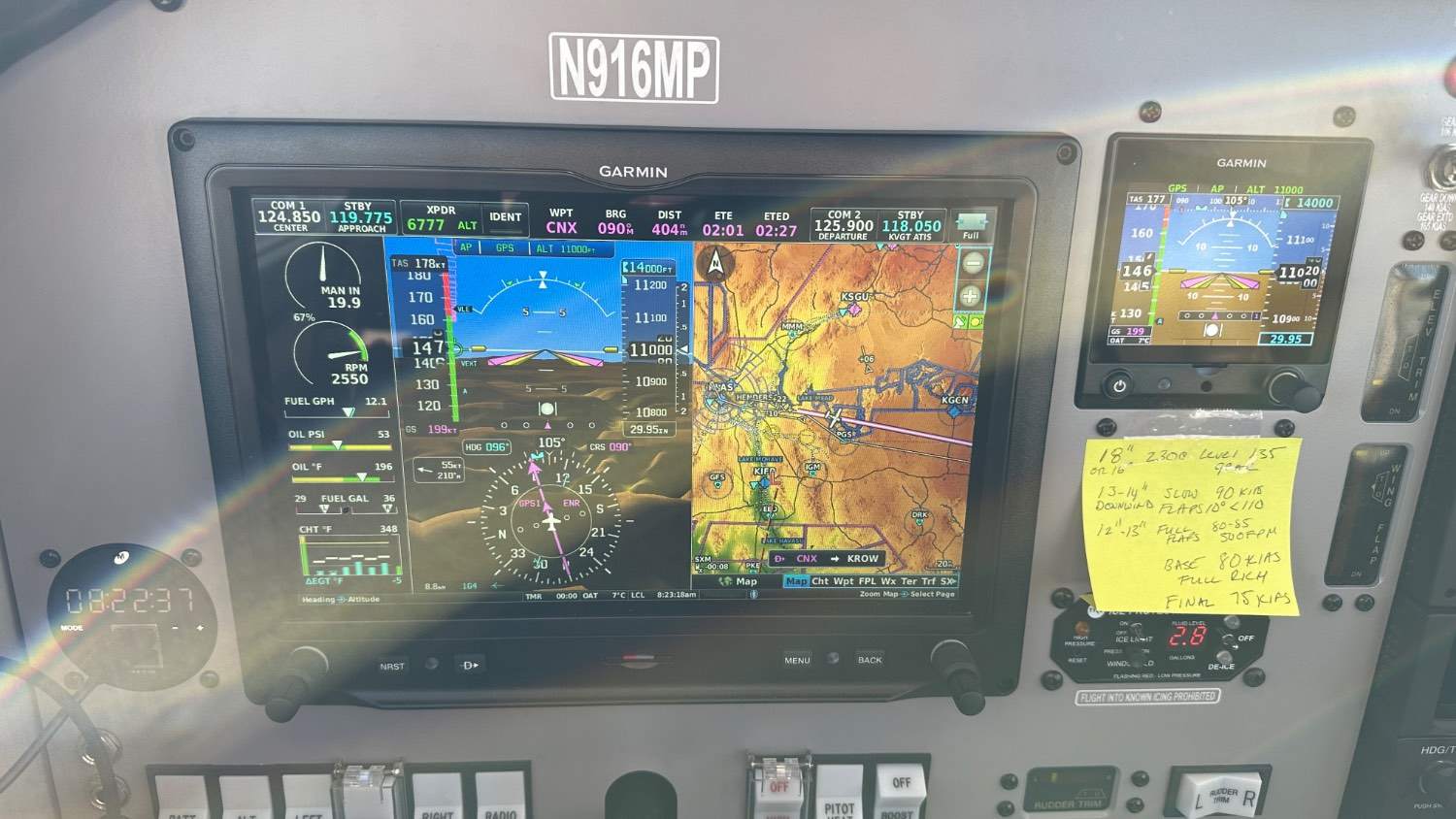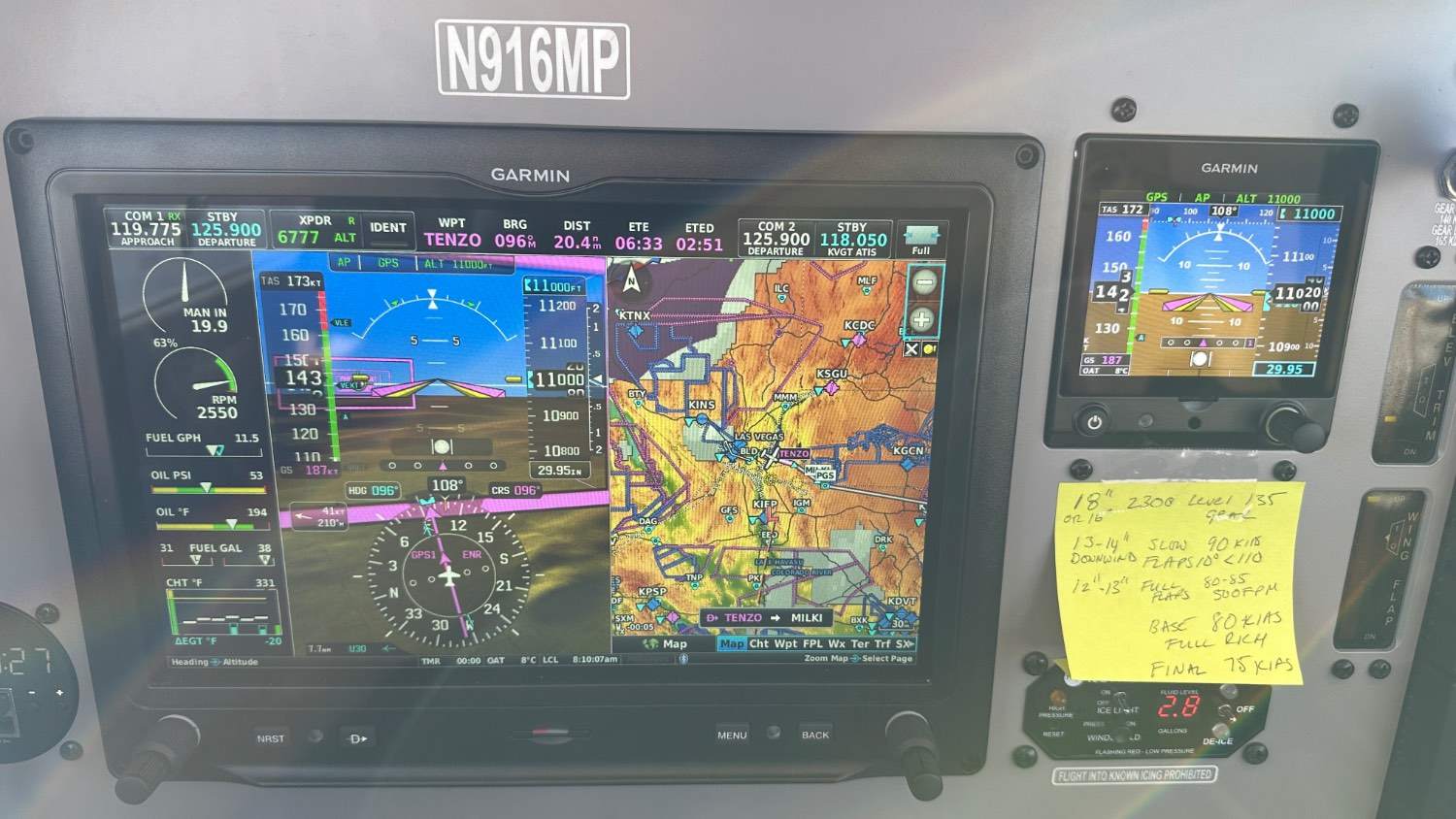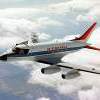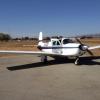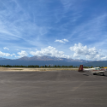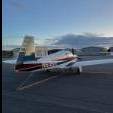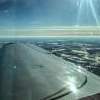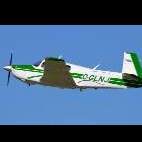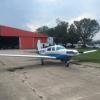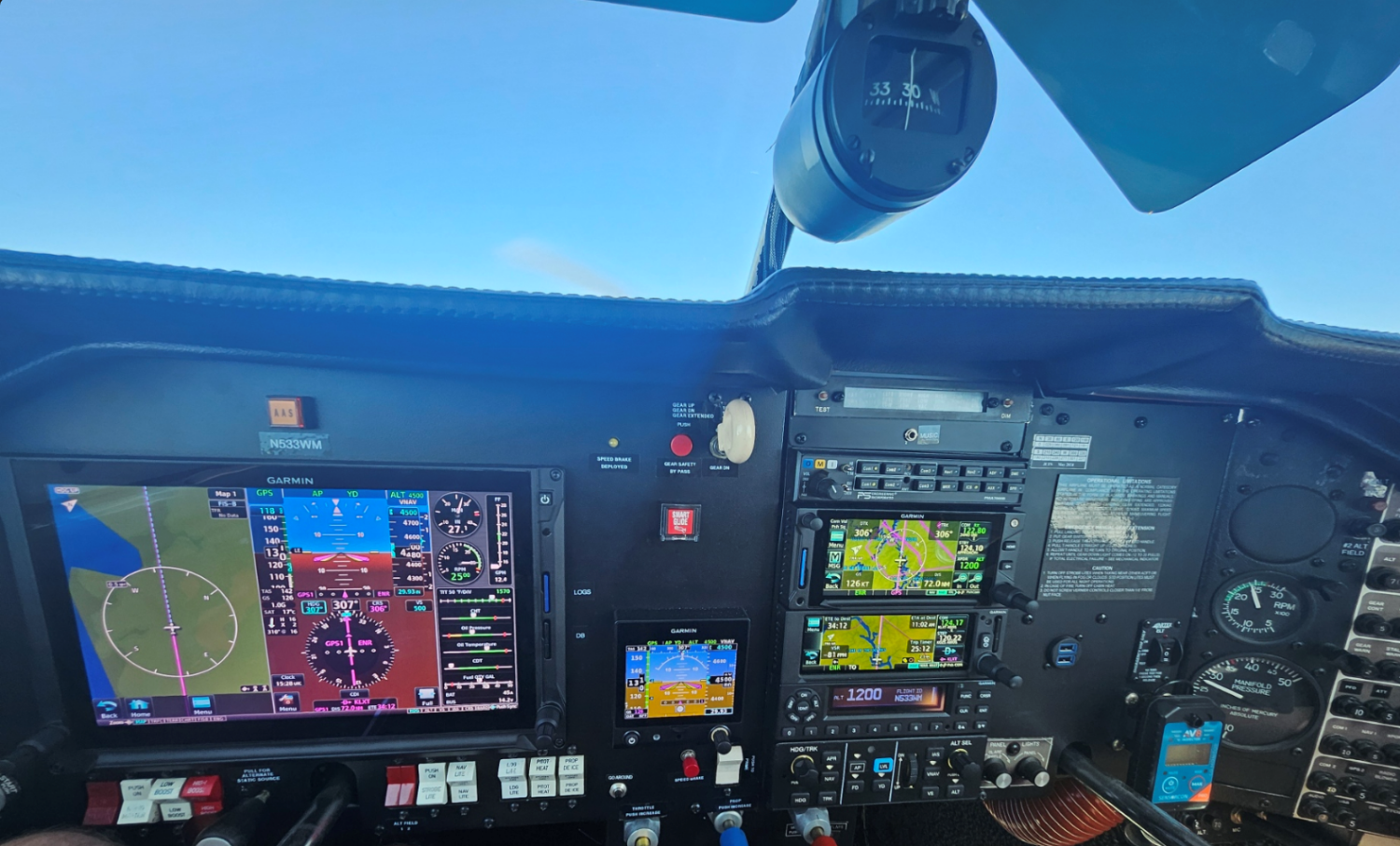Leaderboard
Popular Content
Showing content with the highest reputation on 09/11/2024 in all areas
-
3 points
-
Thanks - I consider myself a careful planner and quite conservative. This was my first foray into something this big. In retrospect, I also think I was suffering a small dose of get there itis combined with concern about the howling winds throughout Las Vegas on my arrival (which didn't happen due to the diversion). I've been told by another pilot that flew the area that the smoke tops were at 22k. and I would have had to make a multi hour detour to fly around it. I probably should have just kept the plane at Hawthorne and hopped on a Southwest to get home. Come back a couple days later and pick up the O. Luckily, nothing other than a dry throat and a dirty plane to serve as a reminder (although my buddy will fly me back to IFP on Saturday to pick up the plane). The outcome could definitely have been worse.2 points
-
Just posting an update to my original post. I received the new tire and tube on Monday. Mechanic took care of it on Tuesday. There was a tiny pinhole in the tube. Not sure where the hole came from. The tube did not appear to have been pinched.2 points
-
Honestly, in retrospect, I should have diverted sooner. By the time I asked for a higher altitude, I would have been out of it before reaching the top. Probably not my finest example of ADM.2 points
-
2 points
-
I've had the opposite problem this year. Rain and TS basically every day. If I'm not available for the maybe two nice hours in a three week span, then I don't fly for weeks on end. Last year was so nice! I've flown less than half of the hours I'd flown by this time last year. It's so frustrating that I'm also wondering if maybe I should just do something else. It's almost impossible to stay current with these weather conditions. But I really do love to fly and can't imagine life on the ground. Maybe next year will be nice again.2 points
-
2 points
-
Big thanks to @Deb for showing me the way! I never realized how much these birds love LOP. I do a lot of X-Country (2 trips Vegas to Texas in the last 3 weeks alone) and after offering me advice and pointing me to to Pelican’s Perch I think I’ve got it! 20 LOP of thereabouts generally gets me 172-174KTAS at between 11.4- 12 GPH. WOT, 2550RPM. Climb is WOT and lean to keep at 1250 EGT all the way to altitude. Love to hear from others what you get LOP.1 point
-
1 point
-
The common acme thread jackscrew (such as the trim screw in the tail) is not easily back driven under load due to friction. This is why screw jacks can lift and hold a load with no locking mechanism. (They are susceptible to slipping under vibration which has the effect of reducing friction.) To reduce operating friction, the landing gear actuators utilize a ball screw with ball bearings between the screw and nut threads. Such screws are easily back driven. As @N201MKTurbo said, the gear train in the Dukes prevents back driving. In the Eaton and Plessey actuators, the infamous noback spring acts as a wrap spring brake to prevent back driving (hence the spring’s descriptive name.) If the weight of the landing gear were able to back drive the actuator, the wheels would not stay in the retracted podition.1 point
-
Because they can? Seems like a good price regardless. I was paying 50 for a portable bottle at KPAE.1 point
-
A New Encore Continental TSIO-360-SB at only $100k seems like a bargain compared to a new Bravo Lycoming TIO-540-AF1B at $175K (75% more). It seems odd that the Rebuilt Encore Continental is so high at $88K. All these prices are after providing a usable Core. Without a Core, the New Lycoming for the Bravo costs $216K ! More and more, when you buy a used GA plane you are paying for Avionics and the Engine/Prop and the rest of the plane is thrown in for free....1 point
-
They don’t, our VR’s are really primitive things, no three stage charging, temp compensation or anything else, just dumb 14 or 28V plus or minus all the time. But then we don’t really cycle our batteries in normal use, starting pulls huge current, but it’s such a short time it discharges a healthy battery very little. The short period of time the Ammeter is high shows that, the battery is recharged usually before takeoff. In truth Auto batteries and ours are constantly overcharged, but obviously they tolerate it rather well. Old Army helicopters that had Ni-Cad batteries we adjusted the VR twice yearly, in spring and fall, it wasn’t much difference I think maybe a half a volt, that was their attempt at temperature compensation. Wet cell aircraft batteries use a higher concentration of acid than automobiles do. I assume that a Concorde VRSLAB battery is the same no matter the label, that’s what I’ve been told anyway. My Engineering contact at Concorde was Skip Koss, who I believe pretty much designed their AGM batteries, but I’m nearly certain he has Retired as that was quite a long time ago and he wasn’t young even then. Concorde is a family owned and run business, or was anyway. If your talking to someone with the last name Godber, that’s the family name. Used to be everyone’s Email addresses were first name@lifeline.com, not Concorde.com. I never asked why1 point
-
Over recent years of fires I've found the Leidos brief insufficient for accurately identifying smoke location. I find the data available on Windy to be more helpful. I've tried to stay visual whenever possible but that can be tough as well when it is as widespread as it gets from some of these large fires.1 point
-
They are usually pretty good with that. I changed routes few times on account of smoke and never had any pushback from ATC. To the contrary, they were quite helpful in finding routes and altitudes with minimal exposure.1 point
-
By the time I asked, the shortest route out was the one I was on. I had no idea the smoke area was that large or that high. I need to go back and see what I missed on the Leidos brief. As I mentioned, there had to be a better way to fly it than what I ended up doing. I may need to go back and re-examine how I look at weather briefs. I'm usually overly conservative, but this was a mistake. Luckily made it through ok. Plane will be ok (I'll need to clean out induction air filter).1 point
-
Thanks, so far we found an induction leak and that the adjustment blocks were way out, it has gotten significantly better, looking at mags next, going to a surefly on left side...1 point
-
Mike, HRD in Santa Clarita is where I send all my bottles for work. They do rafts too. -Matt1 point
-
I'd love to be able to work on our plane but I have a huge knowledge gap which isn't getting any better because we don't have any A&P buddies to sign off on any work that we would perform. For the longest time I was under the impression we couldn't do anything other than oil change, tire change, etc. but it seems quite a few people do work on their own aircraft then have someone else sign it off.1 point
-
The plane has flown regularly > 50 hours per year (last year I flew it 120 hours) for the past 7-8 years, since the engine was OH'ed by Penn Yan with new cam. The cylinders were replaced by the previous owner with new Lycoming cylinders due to a diagnosis of "rough running". My mechanic, when seeing this logbook entry, suspected that they may have had sticking valves and he was surprised that they did not try to hone the guides and instead elected to replace all 4 cylinders. But I guess if money was no object at that time... I have no reason to suspect a power issue, the plane climbs very well and performs excellent in all respects, short of the cruise speed.1 point
-
Griggs installed mine a couple of months ago. I also had to wait quite a while for them to come in, but they actually installed them ahead of schedule. With the new fuel senders and my new engine monitor I am getting excellent fuel readouts. I am 100% satisfied. Good luck!1 point
-
No need for a prescription, you are not buying medical O2. Welding O2 is the same stuff.1 point
-
Check with welding supply shops. They can refill it also. You may need a prescription though. Ask your doctor, he should write it out for you. also, ask your local fob’s who to go to.1 point
-
Check with local dive shops, compressed gas dealers, and fire extinguisher companies.1 point
-
Also, the only way to get nothing but N2 is to put in two valve stems, so you can purge the tire.1 point
-
There are a lot of local shops that do good work for a lot less than Aero Comfort. Yes, I know Aero Comfort does great work. But I tend more to CB status, so saving 10AMU or more is a good thing1 point
-
1 point
-
Have tach and manifold gage calibrated, old plane, old instruments.1 point
-
First thing I would do is take it to someone who really knows whether your Mooney is in rig and flying straight. After that I would blame some cruise speed loss on your three blade prop - 3 to 5 knots. Then figure out if you want to give up the looks and the climb performance of the 3 blade prop for a better cruise 2 blade prop. Finally it's your expectation - when your airplane was being built there was a lot of competition in General Aviation: Cessna, Piper, Beechcraft, Grumman, etc, etc. were all competing for sales. Very few airplanes that ever left any of these factories did what the POH said they would do. Expecting POH numbers for airplanes built in the 60's-80's leads to some disappointment. (Example: How many 201's did 201mph? Same goes for the 231 and 252? It was kind of understood that those were marketing numbers not what you were going to actually see.)1 point
-
I wonder if he was surprised by the 720 foot displaced threshold when landing on RWY 05 which is a loss of nearly 25% of the runway. I also wonder if he was aware of the downslope. You mention “laziness” which I assume you mean is lack of preparation. In the “old days“ of paper charts inbound directories, which were hard to work with in the cabin, it was always important to fully brief everything before flight. Nowadays, with everything available, literally at your fingertip with a touch either on the panel or on an iPad, it’s easier to just “wing it. A pilot can just brief as he goes …. Or maybe not brief at all – hence the surprise.1 point
-
https://www.usatoday.com/story/news/nation/2024/09/08/cottonwod-arizona-plane-crash-hospitalizes-pilot/75133618007/ Look at the first picture from Facebook that is embedded in this USA today article. I am not going to post it. It clearly shows the fire crew cutting the side of the plane out And they have the stretcher ready. The pilot is just lucky that the plane did not catch on fire – he would’ve never gotten out and they would’ve never gotten him out in time1 point
-
I put PS 450B and 750Xi and 650Xi and kept the annunciator panel. I did put the auto pilot controller above the throttle to the left of the stack.1 point
-
1 point
-
I like how you built it. However the wheels are too small for the connection cracks in the concrete slab and for the step between the slab and taxiway asphalt... That's for my hangar. Ymmv1 point
-
Hey Ruthie, have you got some photos that you could post? I’m curious what these look like.1 point
-
Good Day Mooney Owners, This is Ruth Griggs. Griggs Aircraft owner of the Mooney Bladders STC for C, D, E, F, G and J models. We currently have a set of 8 bladders in stock 64 usable gallon. P/N B800 Models C, D, E, or G If interested please contact me asap, they will not be here long. Thank you Ruthie Griggs 570-836-57571 point
-
In AZ we just deal with it. I generally fly in the mornings and take the B-Kool along. I did a four-hour trip a week and a half ago which included stopping in Seligman for lunch, and then returning to DVT (Phoenix) afterward, and the B-Kool was still frozen enough to keep the cabin cool for landing and taxi to the pump and then the hangar. It's a lot less fun without that. Many of the flight schools around here have AC in their airplanes, even the Archers, but some don't. They still fly, they just suck it up. Kinda brutal, but they do it.1 point
-
I just fly earlier, higher or sweatier, no magic1 point
-
I recently did some fiberglass repairs to my top cowl. I added several layers of fiberglass cloth to strengthen the area around the "bump" on top the cowl which always cracks. Mine had a lot of cracks and the fiberglass was "flexible" aka broken in spots. I went with fiberglass for 2 reasons; 1 I had it on hand, and 2 I figure the rest of the cowl is fiberglass and has held up for nearly 50 years, so why reinvent the wheel. They just made it a little bit too thin on top, which a couple extra layers will fix. I have done fiberglass repairs before and my experience is over a large area with curves (like a cowl) it's hard to get the cloth to both lay flat AND get all the excess epoxy out. (can usually do one or the other but not both). As others have said, more is not better when it comes to the amount of epoxy in the fabric. So for those reasons I chose to buy the stuff to vacuum bag it - it was not expensive but I had some of the stuff on hand. I'll give you a quick list in case you want to do the same: Vacuum pump & AC gauge/manifold. I had this already from doing car AC systems but you can buy for a couple hundred or rent from autozone for free. These don't pump a lot of volume but I was able to get a roughly 24" x 20" area sealed up enough to pull plenty of vacuum. If you did a much larger area it might be harder to seal all that and you'd need a bigger capacity pump. 1/4" air hose and adapter to go from 1/4 NPT to 1/4 flare to adapt to gauge manifold, you can get these at local HW store. I got the hose from harbor freight. Vacuum film: https://www.aircraftspruce.com/catalog/pnpages/01-14805.php Vacuum port: https://www.aircraftspruce.com/pages/cm/vacuumbagging_valves/vbvacvalve2.php Breather material: https://www.aircraftspruce.com/catalog/cmpages/vb3450breather.php Release film (peel ply): https://www.aircraftspruce.com/catalog/cmpages/vb5201breather.php Sealant tape: https://www.aircraftspruce.com/catalog/cmpages/tape01-01602.php BTW the sealant tape is key, I doubt another type of tape would work so if you skimp on anything, don't skimp on that. Or the peel ply. I used the other half of the AC gauge manifold to bleed vacuum off as needed to pull about 15" of vacuum. I paint on the epoxy (I used aeropoxy), lay on a layer of cloth, get it all wetted out, then paint more epoxy, next layer of cloth, etc. Then the peel ply. Then the breather material. Then put the sealant tape down around the area (clean a strip with alcohol right before putting down the tape) and put the inside half of the vacuum port somewhere you have a flat spot. Finally the plastic film, push it down tightly all around onto the sealant, hook up the port and then start pulling vacuum. As it tightens up you'll hear any leaks and I was able to seal them up by just squeezing the tape down more. It's thick and rubbery and tries to "suck" into the cracks sealing leaks as the vacuum pulls down. Anyway, I was very happy with the results. It looks as good as the factory glass. Definitely worth the extra effort.1 point
-
Yeah, here ya go: "The diameter of an O2 molecule is 292 picometers, and that of N2 is 300 picometers" And, as I always tell the 'only nitrogen in my tires' crowd,...well, AIR is already nearly 80% nitrogen!1 point
-
Practice approaches with my CFII today - boy was the wind something 360°-100° gusting 35 all over the place — we had to switch runways 3 times due to the changes - clear and a million but wow… tough under the hood but I managed 3 holds (step down practice too), and 3 approaches. Plane did great, brakes worked very well. I got beat up a bit with the gusting winds but slowed her down to minimize the bumps. Love flying this plane. I have annual scheduled for January— will need IFR Cet. Saving up for autopilot still. Haven’t decided which one… -Don1 point
-
Short answer - continuing the approach. He failed to pick a prudent go/no go point to assess the quality of the approach and act on it. If one is going to engage in operations that necessitate reduced margins, the go/no go decision point should be made well ahead of entering the reduced margin environment. I am speculating that like so many other Mooney pilots, he carried a surplus of energy to the runway. We’ve all pooched an approach. I am also speculating that the excess energy was recognizable but the approach to landing continued . The go around was likely initiated in a panic with the airplane having too much energy to stop but insufficient energy to clear the trees even at full throttle. I hope I’m wrong about this accident but it’s not like this is an unusual scenario. I have made hundreds of Mooney landings into a number of <2000’ strips, sometimes with > <1500’ available for landing. I’ve had a few pucker inducing situations. My SOP has evolved in such a way that I expect to go around, not land. As I cross the threshold, I only abort the go around in favor of a landing if speed and descent rate are in a very narrow range of acceptability.1 point
-
Uncontrolled airports pose special hazards to jet traffic for lots of reasons. Basically jets and slower props are incompatible, but following the AIM can add to the complexity of mixed traffic. In all reality, a jet doing a straight in can be advantageous...for everyone. Jets fly wider and faster patterns and generally are a pain for everyone else to keep track of. The bizjets I flew had limited out-the-widow view when turning. Then jets are supposed to fly a pattern 500' above the slower traffic and descend through the prop traffic. Guess how the visibility is under the nose of that jet as it slows to approach speed is as it descends! I hear stories about arrogant jet pilots pushing the little guys around, but I've never seen it. We were always terrified of a midair, and would fly miles out of our way to make sure Mr. Moneybags in the back had a safe and comfortable ride. We always appreciated when other pilots volunteered to let us fly straight-ins to minimize maneuvering and reduce our time in the pattern. If you were one of those pilots....thank you. Thank you, very much!1 point
-
We have a G500TXi/GTN650xi/GNC355/G5/GFC500/FS510. It works great and there's not anything I'd change. A GTN750 didn't seem worth the extra cost and panel space, and neither did a stand-alone dedicated engine monitor or a MFD. I'd rather have 2 GPS and 1 nav than 2 nav and 1 GPS, but that's a preference. Just about everything has a backup. Flight plans push from a phone to the panel and back, and everything updates either through Garmin Pilot wirelessly or by a single SD card in the GTN650. Very easy to use and maintain.1 point
-
I went through the same iteration. See the thread "Let the Games Begin" in the avionics section. I did G3X. The G500TXi has a better screen and has some things that are more configurable than the G3X, but at a higher price. If you are going all Garmin, the G3X is fine. The only thing I really don't like is that it does not connect to the high speed data bus, so you need to update using an SD card. I have both a 750Xi and 650Xi. But I already had the 650Xi and the price savings to downgrade with not that large, so I kept it. It is not needed, but it is very nice. Most time, I put the traffic page up on it. I originally planned on an AERA 760 in a dock for the right side, but switched a 7" portrait G3X. Gives me another screen, or, if there is a pilot in the right sear, they can have a PFD or MFD display. I went with the Garmin EIS. I had a JPI 830. I liked the JPI display, but the Garmin does a good job. And there is an issue in a Mooney about panel space. My panel is FULL. Pictures of my panel1 point
-
Those switches are huge, I went with smaller switches and moved them to the left side (not in the picture), I wanted everything I interact with within easy reach of my right hand. Also got a panel mounted compass to clean up the view.1 point
-
1 point
-
I’d sure try a patch first, it could still be one small seep, that travels along the outside of the leak. Full strip and reseal is in my opinion where you end up after fixing a couple of leaks, you may get several years out of a fix, or may not too. I’ve fixed more than one leak on brand new airplanes, the most difficult thing is finding exactly where the leak origin is. Often where it’s appearing may not be where the actual leak is.1 point
-
1 point
-
I'm trying to understand what everyone is talking about with tying together CBs. It sounds like if you have 2 devices that each pulls 5 amps you just tie them together to (I assume) a 10 amp CB. If this is what everyone is meaning, it is a terrible idea. Here's the scenario: component A is rated to 5A, but goes hay-wire and starts to pull 9 amps. The CB doesn't pop but the wiring is only rated for 5A. Wires overheat and you get a nice electrical fire right above your knees throwing out a lot of smoke from 40 year old wiring. No thanks and not legal. If I'm misunderstanding, please explain. I have whole separate row of CBs just below the co pilot panel. Hopefully I'll remember to take a picture tomorrow.1 point

